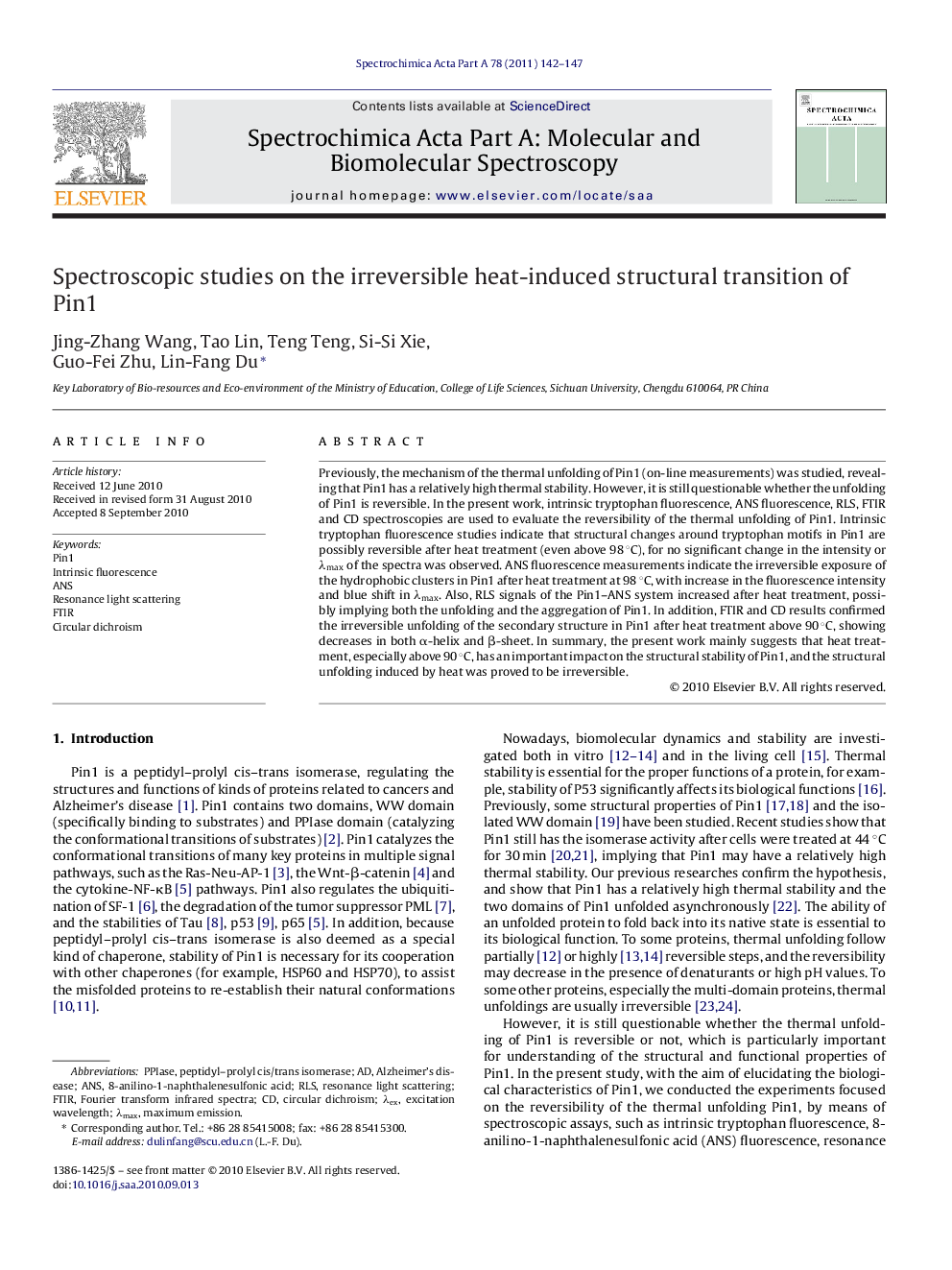| Article ID | Journal | Published Year | Pages | File Type |
|---|---|---|---|---|
| 1233722 | Spectrochimica Acta Part A: Molecular and Biomolecular Spectroscopy | 2011 | 6 Pages |
Previously, the mechanism of the thermal unfolding of Pin1 (on-line measurements) was studied, revealing that Pin1 has a relatively high thermal stability. However, it is still questionable whether the unfolding of Pin1 is reversible. In the present work, intrinsic tryptophan fluorescence, ANS fluorescence, RLS, FTIR and CD spectroscopies are used to evaluate the reversibility of the thermal unfolding of Pin1. Intrinsic tryptophan fluorescence studies indicate that structural changes around tryptophan motifs in Pin1 are possibly reversible after heat treatment (even above 98 °C), for no significant change in the intensity or λmax of the spectra was observed. ANS fluorescence measurements indicate the irreversible exposure of the hydrophobic clusters in Pin1 after heat treatment at 98 °C, with increase in the fluorescence intensity and blue shift in λmax. Also, RLS signals of the Pin1–ANS system increased after heat treatment, possibly implying both the unfolding and the aggregation of Pin1. In addition, FTIR and CD results confirmed the irreversible unfolding of the secondary structure in Pin1 after heat treatment above 90 °C, showing decreases in both α-helix and β-sheet. In summary, the present work mainly suggests that heat treatment, especially above 90 °C, has an important impact on the structural stability of Pin1, and the structural unfolding induced by heat was proved to be irreversible.
